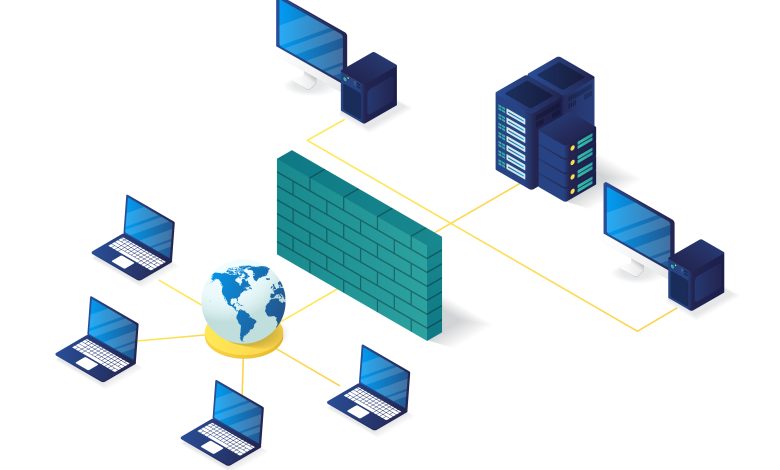Web Security: How to Protect Your Website in Malaysia Against Common Attacks?

Website owners typically hold one of two beliefs if there is one specific reason why they don’t take action to improve their internet or web security to shield their blogs and websites from attackers:
They don’t think their blog or website contains the genuine value to attackers. Regardless, they don’t think they’ll ever be assaulted.
Both viewpoints are at odds with how you should think about website security. You run a significant danger of identity theft and fraud if you don’t take the most basic precautions to protect your websites against attackers.
Protect Your Website From SQL Injection
An SQL Injection attack occurs when a hacker manipulates your database by using a URL parameter to access your website.
Suppose you are currently using a standard Transact SQL. In that case, you run the significant danger of falling victim to a SQL Injection attack since it is pretty simple for an attacker to insert malicious code into your query and access your data and information.
It would be best if you used a parameterized query to prevent this from happening to you. It is easy to implement because most web languages support it. Only from 2015 to 2016 was a 32% increase in infected websites.
This is why you need to act immediately away, and one of your initial security steps should be to protect against SQL Injections.
Install a security socket layer
Using HTTPS, a protocol that enables secure communication over your computer network and guarantees that no outsiders will be able to tap into your material, is the ideal approach to adding a security socket layer (SSL) to your website.
This implies that customers can surf your website safely while providing their credit card numbers or login information. Because of this, you should always utilize HTTPS on the areas of your website where visitors will be providing sensitive information, including login credentials or payment card information. If someone takes it, they won’t be able to impersonate the user.
Additionally, implementing HTTPS can make your website more visible since Google will give HTTPS-enabled websites a boost in search engine results.
Protect Yourself From XSS Attacks
In contrast to other assaults (such as the SQL Injection we discussed before), an XSS or cross-site scripting attack is intended to target users of an application or server rather than the programme or server itself.
To do this, attackers insert malicious JavaScript code into a web application’s output. They can insert this harmful code into your cookies, forums, comment areas, and search boxes. Cross-site Scripting may be easily exploited in any of these places.
The malicious code will enable the attacker to collect cookie data, including sensitive user data, login credentials, session IDs, and credit card numbers.
Using an advanced SDL, or security development lifecycle, in your Web application will be the most vigorous defence against an XSS attack. Said an SDL’s goal is to reduce the number of code mistakes in your programme.
You can also require visitors to enter their passwords again to access particular sections of your website. Even if a user has a cookie that automatically logs them into your website, you should still need them to submit their login details again. This will significantly lower the likelihood of an XSS attack.
Keep an eye on the email transmission ports
Your email, rather than your actual website, will be a primary target for attackers looking to obtain your information.
Have you ever considered the security of your email transmissions? The good news is that determining your transmissions’ security can be quick and straightforward. Check the ports you use to communicate by going to your email settings. Your email transfers are NOT secure if you use the IMAP Port 143, POP3 Port 110, or SMTP Port 25 ports for communication.
On the other hand, your emails are safe if you are interacting over SMTP Port 465, IMAP Port 993, or POP3 Port 995 since those ports are encrypted.
Disallow Uploads of Files (Or At Least Be Highly Suspicious)
By permitting file uploads to your website in the first place, you’re constantly taking a significant risk. No matter how innocent the uploaded file may seem, it could include a script that invites hackers to attack your website.
A security issue might also arise from enabling users to submit an avatar or photograph. If you have a form that lets users upload files, you must scrutinize each file. Because images may be spoofed, you can’t rely on the file extension to confirm that your submitted file contains a photograph. Any picture format, for instance, enables the storage of a comment area that may include malicious PHP code.
Stop direct access to any files uploaded to your website; this is the best course of action. Any files posted to your website at this time will be kept in an external location.
If you utilize cloud hosting, many providers provide a particular setting that enables the approval or rejection of file uploads based on a visitor’s location as identified by their IP address.
You might allow all uploads from all nations except those from specific regions, like China and Iran. Alternatively, you might restrict uploads to those coming from IP addresses associated with allow listed geos.
For my part, I’ve discovered that blocking direct access to any file uploads and/or uploaded files on my website is more successful. As any VPN review can confirm, masking an IP address is simple. Most top virtual private network companies can almost certainly conceal IP addresses.
A no-tolerance approach is frequently the best way to keep harmful files out (and it helps me sleep better at night).
Spend money on website vulnerability scanners.
Finally, you may spend money on website vulnerability scanners, which can find technical flaws in your website that make it susceptible to XSS and SQL Injection attacks, among other things. Consider several important factors when selecting a website vulnerability analyzer.
For instance, your scanner must detect vulnerabilities beyond those often encountered, such as cross-site Scripting. Failure to protect directories illustrates a less frequent exposure that your scanner should address.
Additionally, your scanner must maintain its usefulness over time. Therefore, it should be updated often with the most recent vulnerabilities. This implies that the scanner should have a highly skilled crew operating in the background to keep one step ahead of cybercriminals.
Conclusion
Finally, pay great attention to scalability, particularly if you need to support hundreds or thousands of apps. These are the six most straightforward ways to protect your website against intruders while being very effective. These techniques won’t ensure the security of your website, but they will considerably increase its security and make it less tempting to attackers than before, and that’s what counts. Kindly visit: Spectrum Edge to learn more other cybersecurity solutions to secure your business.
Special thanks to Zippiblog.com




